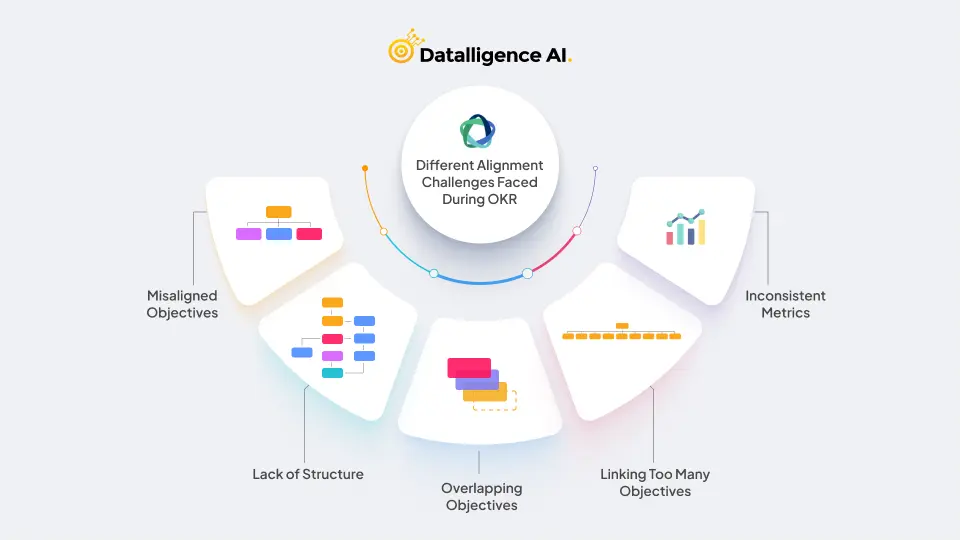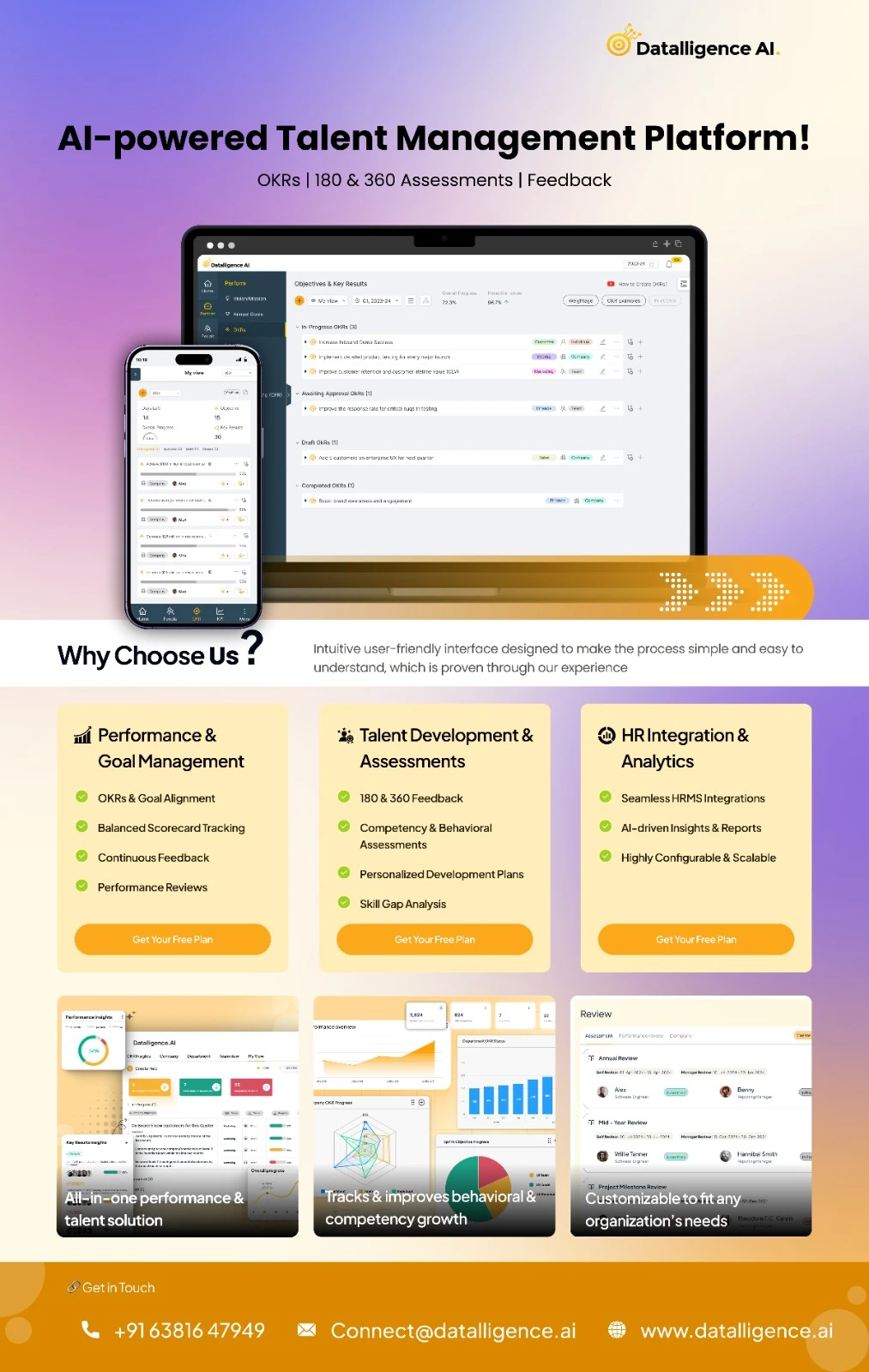Have you ever set a goal for yourself or your team, only to find that it wasn’t aligned with the larger objectives of your organization?
Or perhaps you’ve experienced the frustration of working towards a goal, only to find that it wasn’t measurable or achievable. These are just a few of the challenges that organizations face when it comes to aligning their goals using OKRs.
According to the statistics 93% of the company’s employees do not understand its strategy.
While OKRs can be a powerful tool for driving alignment and achieving success, they require careful planning and execution.
In this blog, we’ll explore some of the common challenges that organizations face when it comes to OKR alignment and provide strategies for overcoming them.
OKRs and Alignment
OKRs are a powerful goal-setting framework that helps organizations to align their goals and focus their efforts toward achieving success. The framework consists of two main components: objectives and key results 📈. By setting clear objectives and key results, organizations can ensure that everyone is working towards the same goals and has a shared understanding of what success looks like.
Alignment is critical for the success of an organization because it ensures that everyone is working towards the same goals and is focused on the most important priorities.
When objectives and key results are aligned, it creates a clear direction for the organization, promotes collaboration 👥, and helps to drive success 💪
Why is OKR alignment important for employee, team, and organizational goals❓
OKR alignment is crucial for achieving success at all levels of an organization. When objectives and key results are aligned, employees, teams, and the organization are more likely to achieve their goals.
Here are some reasons why OKR alignment is important:
1. Helps to create a sense of direction and purpose for employees and teams, which can increase motivation and engagement.
2. Ensures that everyone is working towards the same goals, which can help to improve collaboration and teamwork.
3. Allows for better resource allocation, as resources can be focused on the most important goals and objectives.
4. Enables leaders to track progress toward goals and make necessary adjustments to ensure everyone is on track.
5. Promotes accountability and transparency, as everyone knows what they are responsible for and how their work contributes to the organization’s overall success.
Different alignment challenges faced during OKR

🤔 Misaligned Objectives
One of the biggest challenges is when objectives are not aligned across teams and departments. This can lead to confusion, conflicting priorities, and a lack of focus. It’s important to ensure that objectives are clearly defined, measurable, and aligned with the company’s overall mission and vision.
🏗️ Lack of Structure
Without a clear structure for setting and tracking OKRs, it can be difficult to keep everyone on the same page. Having a well-defined process and framework can help teams stay organized and focused.
🔀 Overlapping Objectives
When objectives overlap or duplicate each other, it can create redundancies and waste resources. Make sure to review and prioritize objectives to avoid this issue.
🌟 Linking to Many Objectives
It’s tempting to want to link all objectives together, but it’s important to ensure that each objective is focused and aligned with the broader company vision. Linking too many objectives can lead to confusion and dilute the impact of each objective.
📊 Inconsistent Metrics
To ensure that OKRs are aligned, it’s important to use consistent metrics across all teams and departments. When metrics are inconsistent, it can lead to confusion and a lack of clarity around what is expected. It’s important to establish consistent metrics and to ensure that everyone is aware of how they will be measured.
Strategies to overcome alignment challenges
To overcome OKR alignment challenges, organizations can adopt several strategies that help ensure that team objectives are aligned with the overall company objectives. Here are some strategies to consider:
Clear communication
Google, which is one of the pioneers of OKRs, encourages managers to have one-on-one meetings with their direct reports to discuss their OKRs and how they align with the company’s overall goals. Additionally, Google conducts company-wide town hall meetings where leadership shares updates on the company’s overall goals and how teams are contributing to them.
Involvement and ownership
Intel encourages its employees to take ownership of their OKRs by allowing them to create their objectives and key results. Employees are also encouraged to seek feedback from their peers and managers to ensure that their OKRs are aligned with the company’s overall goals.
Regular check-ins
LinkedIn uses a system called “Check-ins” to monitor progress toward OKRs. The system allows employees to track their progress, seek feedback, and adjust their OKRs as needed. Additionally, managers are required to provide ongoing feedback and support to their direct reports.
Data-driven approaches
Adobe uses a tool called “Adobe Connect” to track progress toward OKRs. The tool provides real-time data on progress and allows employees to collaborate on achieving their objectives. Additionally, Adobe encourages its employees to use data-driven approaches to set their objectives and measure progress toward achieving them.
Balance short-term and long-term goals
Amazon encourages its employees to set long-term objectives that align with the company’s overall goals. Additionally, Amazon encourages its employees to balance short-term and long-term objectives by setting objectives that can be achieved within a quarter, as well as objectives that may take several quarters or even years to achieve.
How OKRs and Datalligence can help create alignment🚀
OKRs and Datalligence can help create alignment in organizations by providing a clear direction, data-driven insights, a feedback loop, and transparency. OKRs help to set clear objectives and key results, while Datalligence provides insights into business performance. Together, they create a feedback loop that ensures everyone is working towards the same objectives based on a shared understanding of what is driving success.
Additionally, OKRs and Datalligence promote transparency by making goals and data visible to everyone in the organization, which helps to create alignment.
Conclusion
In conclusion, OKRs can be a powerful tool for driving results and aligning teams toward common goals. However, organizations need to be aware of the alignment challenges that come with implementing OKRs. By adopting strategies organizations can overcome alignment challenges and achieve success with their OKRs. Talk to our experts and coaches on this topic and gain more insight or Try Datalligence for Free.











